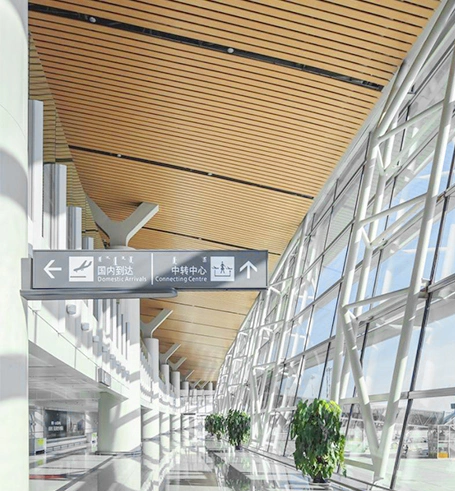The Environmental Impact of Using Aluminum in Building Facades and Ceilings
In recent years, there has been a growing focus on sustainable and eco-friendly construction practices in the architecture and design industry. One material that has gained significant popularity for its environmental benefits is aluminum.
The Recyclability of Aluminum
Aluminum is a highly recyclable material, with nearly 75% of all aluminum ever produced still in use today. This means that using aluminum in building facades and ceilings can greatly reduce the demand for virgin aluminum, which requires a significant amount of energy to extract and process. By choosing aluminum for their projects, architects and designers can help reduce their carbon footprint and promote a more circular economy.
Durability and Longevity of Aluminum
Another key environmental benefit of using aluminum in building facades and ceilings is its durability and longevity. Aluminum is a corrosion-resistant material that can withstand harsh weather conditions and requires minimal maintenance over its lifespan. This means that buildings constructed with aluminum facades and ceilings will have a longer service life, reducing the need for frequent replacements and the associated environmental impact of construction and demolition waste.
Efficient Use of Resources with Aluminum
Additionally, aluminum is a lightweight material, which can result in a more efficient use of resources during construction. By using aluminum in building facades and ceilings, architects and designers can reduce the overall weight of a structure, potentially leading to cost savings as well as a lower carbon footprint. This is especially important in the construction of large commercial buildings, where every pound of material can have a significant impact on the overall energy and resource consumption of the project.
Energy Efficiency of Aluminum
Furthermore, the energy efficiency of aluminum as a building material cannot be overlooked. Aluminum is a highly conductive material, which means it can easily transfer heat and cold. This property can be leveraged to improve the energy performance of a building by incorporating thermal breaks and insulation into the design of aluminum facades and ceilings. By optimizing the thermal properties of aluminum, architects and designers can create more sustainable and energy-efficient commercial spaces that contribute to a healthier indoor environment and lower energy costs.
Conclusion
In conclusion, the environmental impact of using aluminum in building facades and ceilings is significant and multifaceted. From its recyclability and durability to its lightweight and energy-efficient properties, aluminum offers a wide range of benefits that can help architects and designers create more sustainable and eco-friendly commercial spaces. By embracing innovative design trends that leverage the environmental benefits of aluminum, the architecture and design industry can play a crucial role in promoting a more sustainable and resilient built environment for future generations.








